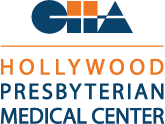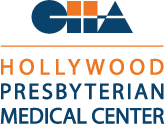Since the mid-1970s, the world has been in a state of technology-driven development known as the Information (or Digital) Age, generally characterized by the development of innovative tools to allow people to transmit increasingly large amounts of data and information at faster rates. The Internet is often singled out as the most defining element of the time.
Today, computer engineering and information technology (IT) have been embraced by people, nations and industries. One of the most important sectors computer engineering and IT have impacted in the past decades is medical research, where both are key parts of the Convergence in Healthcare movement.
Scientists, chemists, engineers, mathematicians, computer engineers and other IT professionals are contributing to the development of groundbreaking medical advances and innovative new tools that benefit human health. One valuable IT tool in the Convergence in Healthcare movement changing the way disease are diagnosed is the smartphone.
Early diagnosis of Autism Spectrum Disorder
Studies suggest an early diagnosis of Autism Spectrum Disorder (ASD) followed by intensive applied behavior analytics interventions could help a child with autism overcome developmental hurdles to reach full potential. In some cases, children who receive an early ASD diagnosis and are treated do not meet spectrum criteria later in life.
Researchers are using the smartphone as a tool for the early diagnosis ASD and other health conditions. For example, scientists from Duke University developed a computer program which monitors a child’s face while observing a video.

The child’s eye movements while watching the video are analyzed using an algorithm to determine if there are signs of ASD. The program was converted to an iPhone app for use by parents to administer the test to their own children and then consult with a specialist if the results indicate ASD.
This is one way the smartphone’s role in Convergence in Healthcare is empowering the average person through more efficient, affordable tools for early diagnosis. The simpler it is to self-screen or to screen family members for health issues, the more opportunity there is for people on the economic spectrum to seek earlier treatment and achieve a positive outcome.
Data gathering to identify new diagnostic patterns
The power of the smartphone in medical diagnosis is strengthened by its ability to collect data from sensors, as it does via popular products such as FitBit. Worn on the wrist, the most advanced model of the FitBit device tracks personal data for the owner, including heart rate, cardio fitness level and sleep stages. The information is stored on an accompanying smartphone app, where it can be viewed at the owner’s discretion.
Within the Convergence in Healthcare movement, scientists are exploring this same sensor-smartphone pairing as a way to collect mass amounts of health data from willing patients. By capturing the Big Data from large groups of people and processing it with the aid of machine learning, researchers may learn to identify new patterns that equate to widespread chronic disease.
Prior to the Digital Age, passive data collection of this magnitude was out of reach, requiring doctors to primarily rely on their own observations and patient reporting to establish patterns. Smartphones are on track to radically change the gathering of mass human health data, and in the process give medical professionals new insights into the earliest signs of serious illness.
Telemedicine for the developing world
Telemedicine is changing the availability of healthcare in developing nations for the better, and the smartphone is an invaluable part of the effort. In global areas of need, there may be too few physicians to treat large populations, a lack of professionals practicing specialized medicine or physicians who require support from other qualified medical professionals. The smartphone is being used to help provide the necessary resources in these situations.

One of the most promising Convergence in Healthcare initiatives which relies on the provision of telemedicine via smartphone is a paper urine test used for the early detection of cancer. The simple test can be conducted without the assistance of highly specialized medical professionals, making it viable for people living in rural areas who have little or no access to healthcare.
Once the test is taken, the paper test strip is photographed with a smartphone and sent to a qualified medical professional anywhere in the world for interpretation and diagnosis. A patient with a positive diagnosis can then be directed to the nearest appropriate medical center to receive treatment.
The use of smartphones as a means of capturing and sharing the results of simple, life-saving tests could drastically improve life expectancy for people around the world, no matter their level of access to quality healthcare.
 ENGLISH
ENGLISH  РУССКИЙ
РУССКИЙ 


